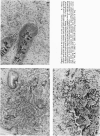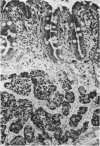Abstract
A patient with atrophic gastritis and excessively raised serum gastrin concentrations (4000 to 5000 pg/ml) was found to have multiple polypous tumors of the gastric corpus mucosa. Following gastrectomy, serum gastrin concentrations decreased to undetectable levels. The tumors consisted of a mixed population of endocrine cells. The majority of tumor cells were of the ECL type, but, in addition, enterochromaffin cells of various subtypes as well as agranular cells were found. The tumors were locally invasive and invaded the walls of submucosal blood vessels. The surrounding mucosa showed a severe atrophic gastritis with intestinalization and contained numerous goblet cells, enterochromaffin cells, and cholecystokinin cells. Cholecystokinin cells do not occur in the normal oxyntic mucosa. Hence, the observation of this cell type in intestinalized gastric epithelium suggests that "intestinalization also is associated with changes in endocrine cell populations. Gastrin has been shown to affect the function of the ECL cells. Indications for a trophic action of gastrin on these cells have been obtained. It is discussed whether greatly raised serum gastrin levels in patients with atrophic gastritis may be associated with increased risks for the development of certain types of gastric tumors.
Full text
PDF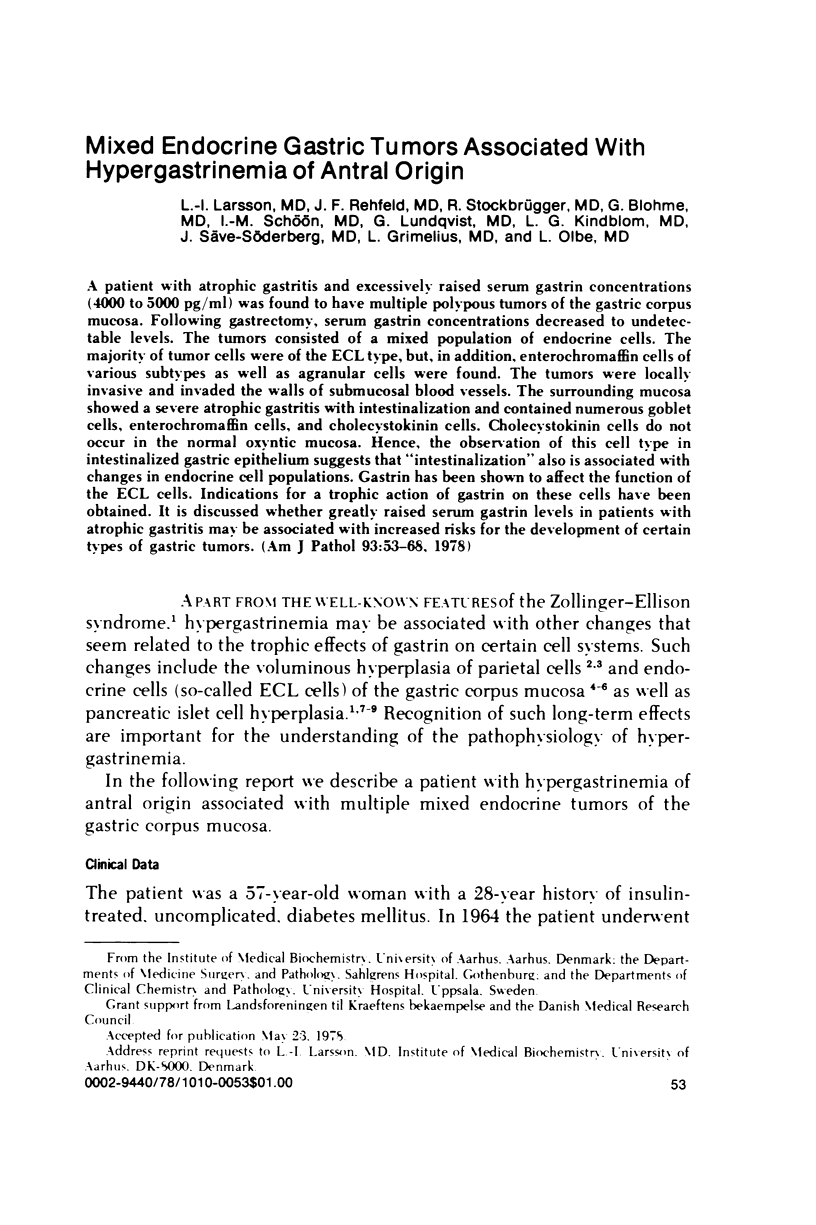
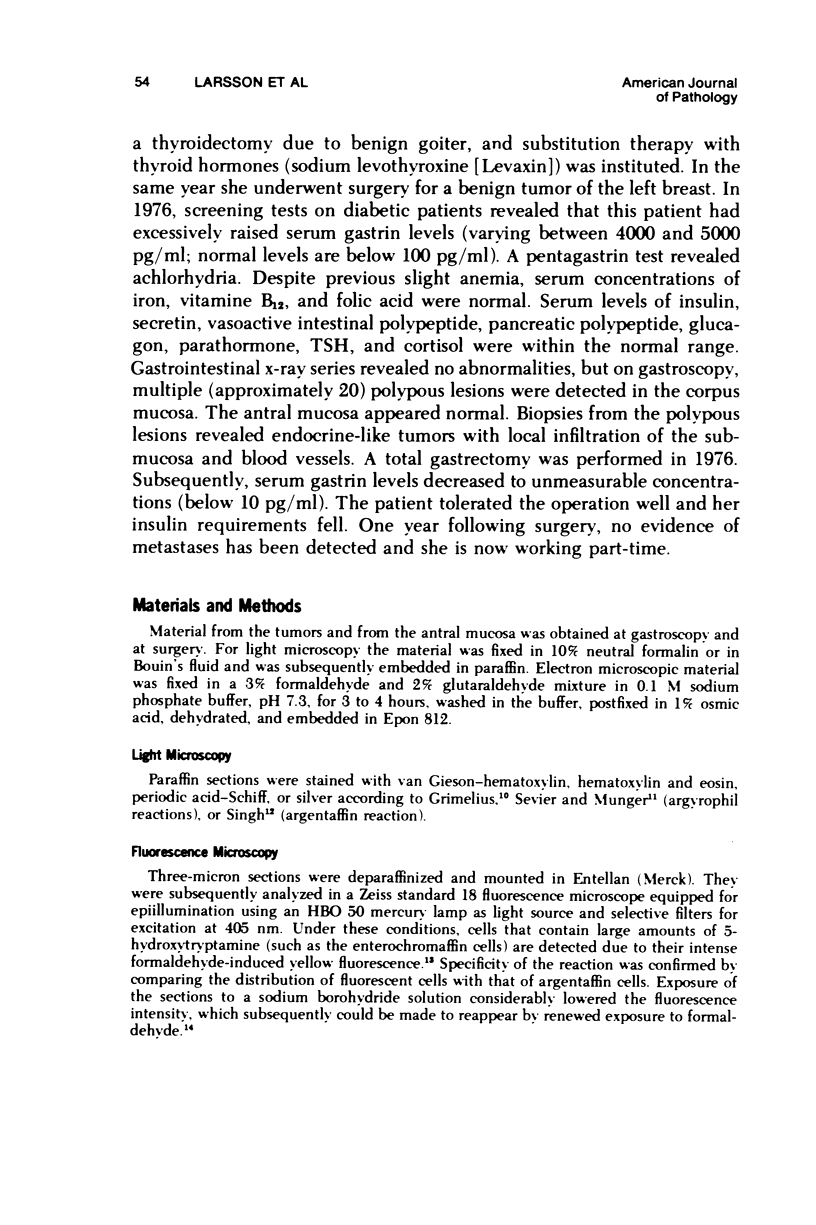
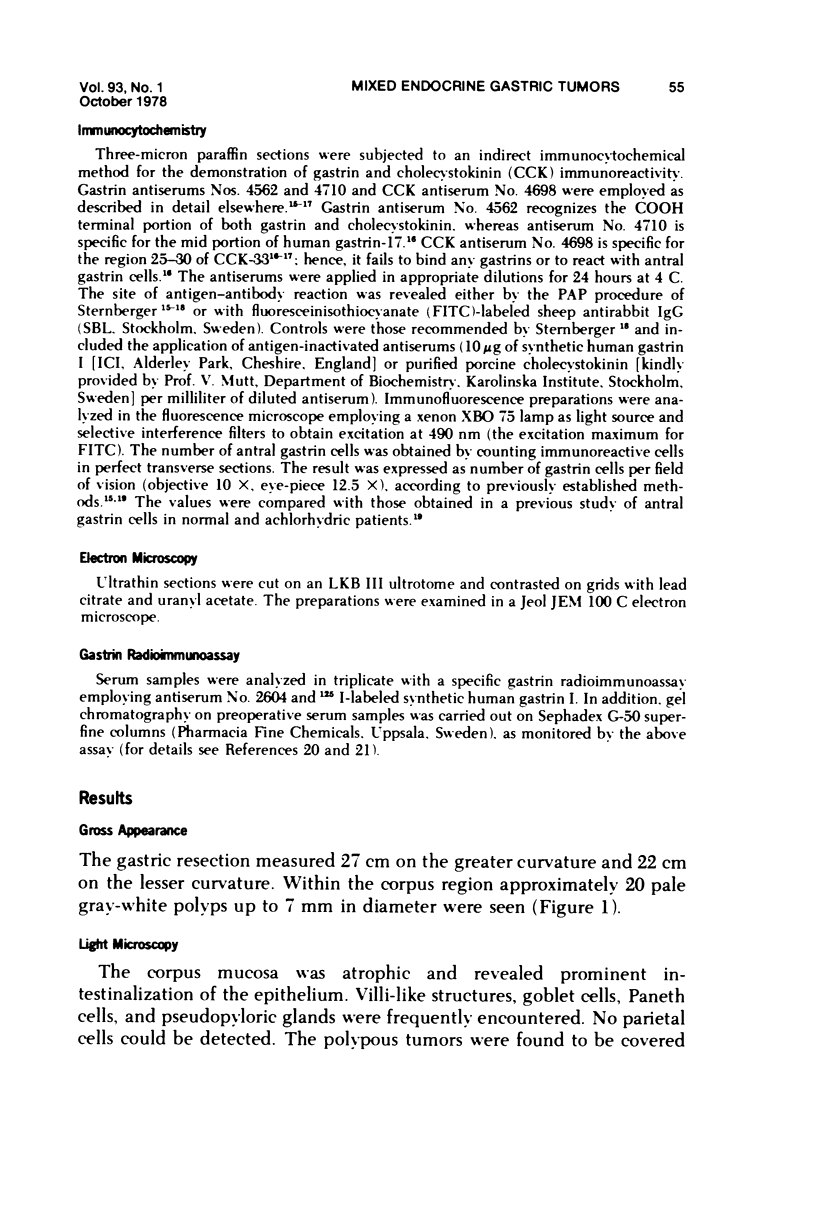
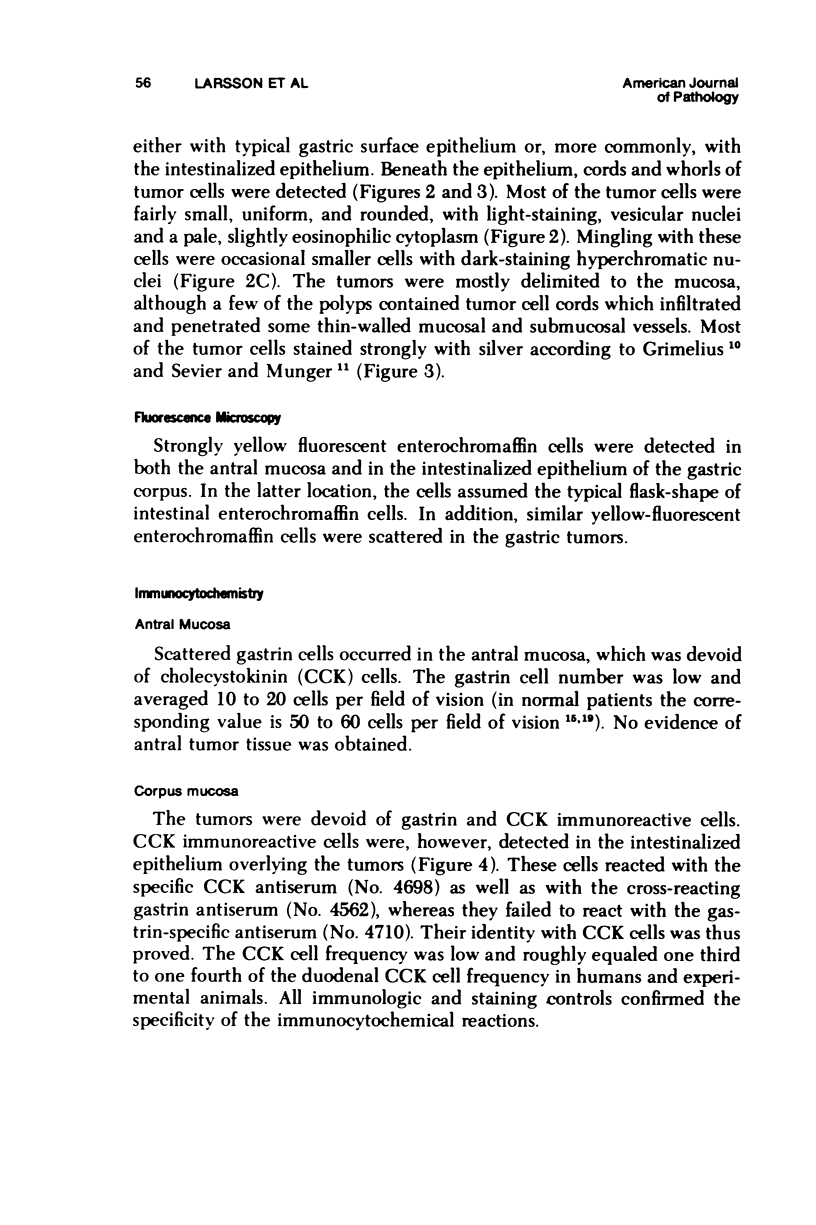
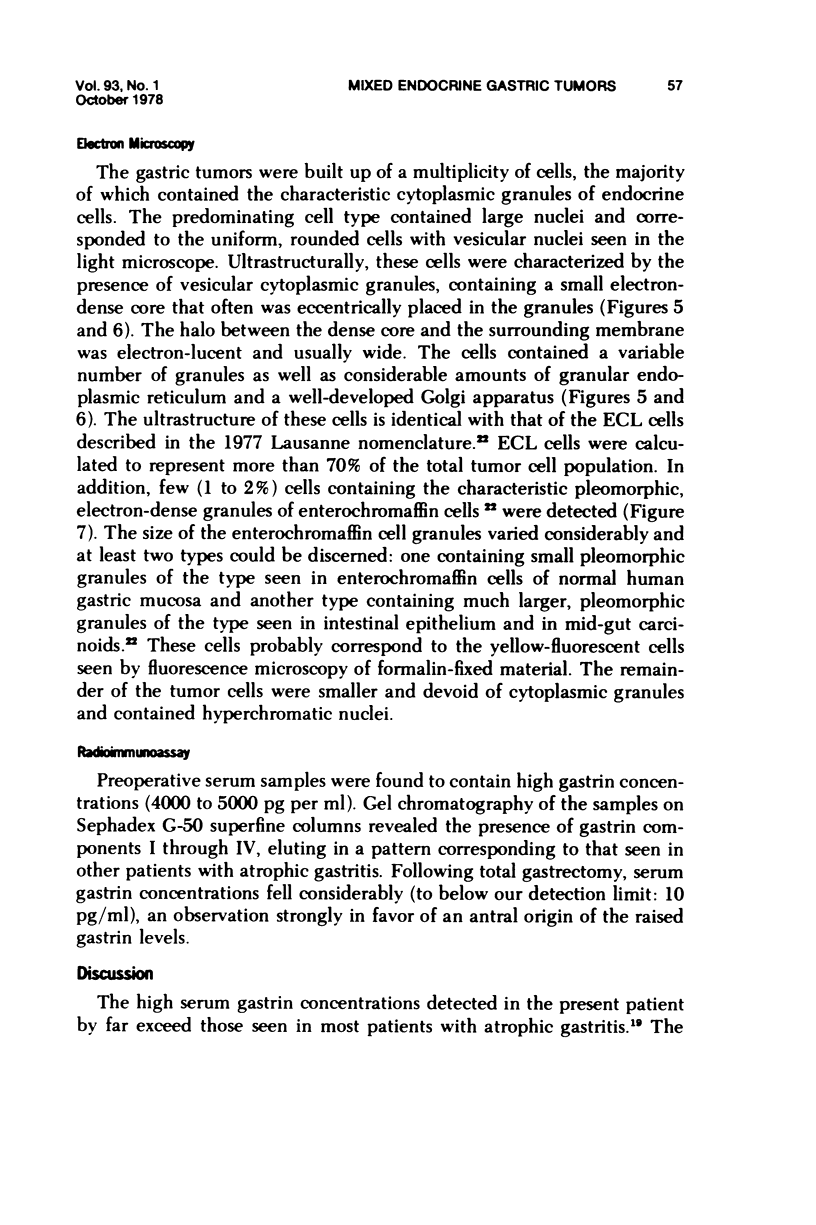
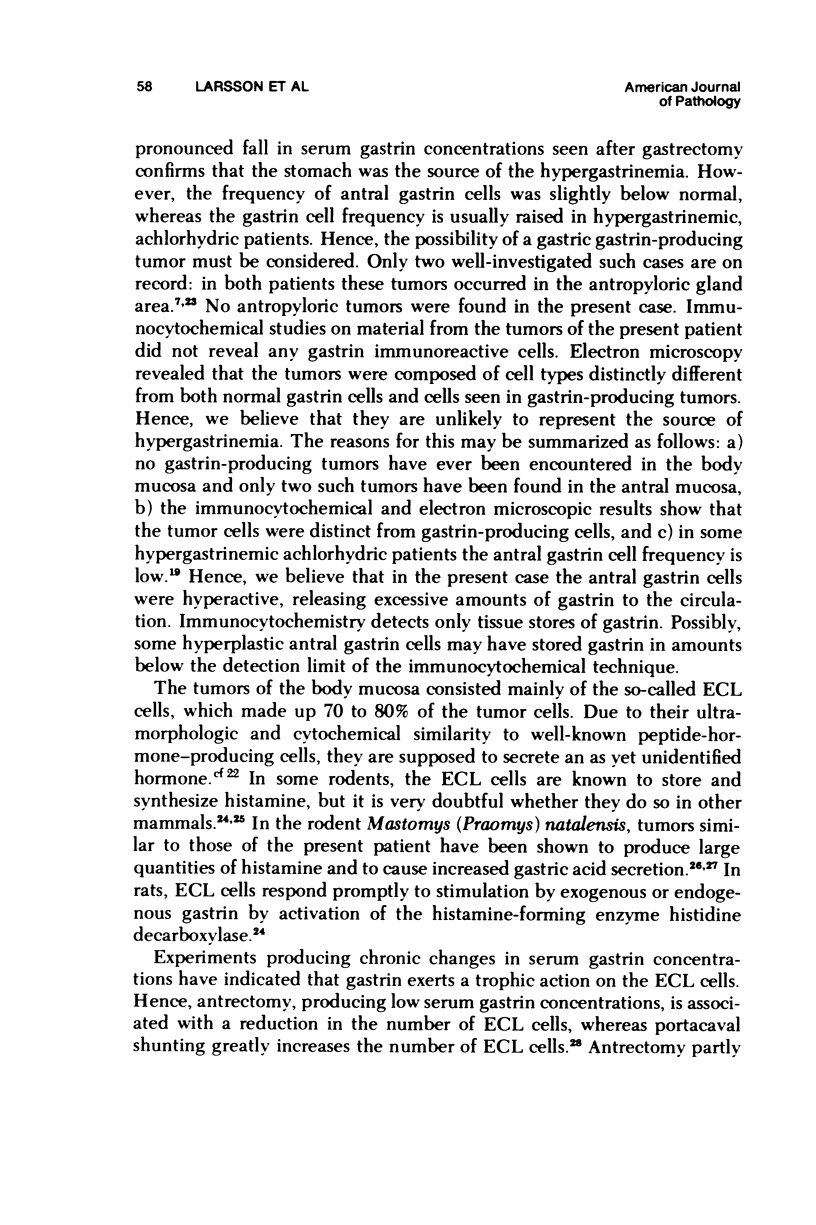
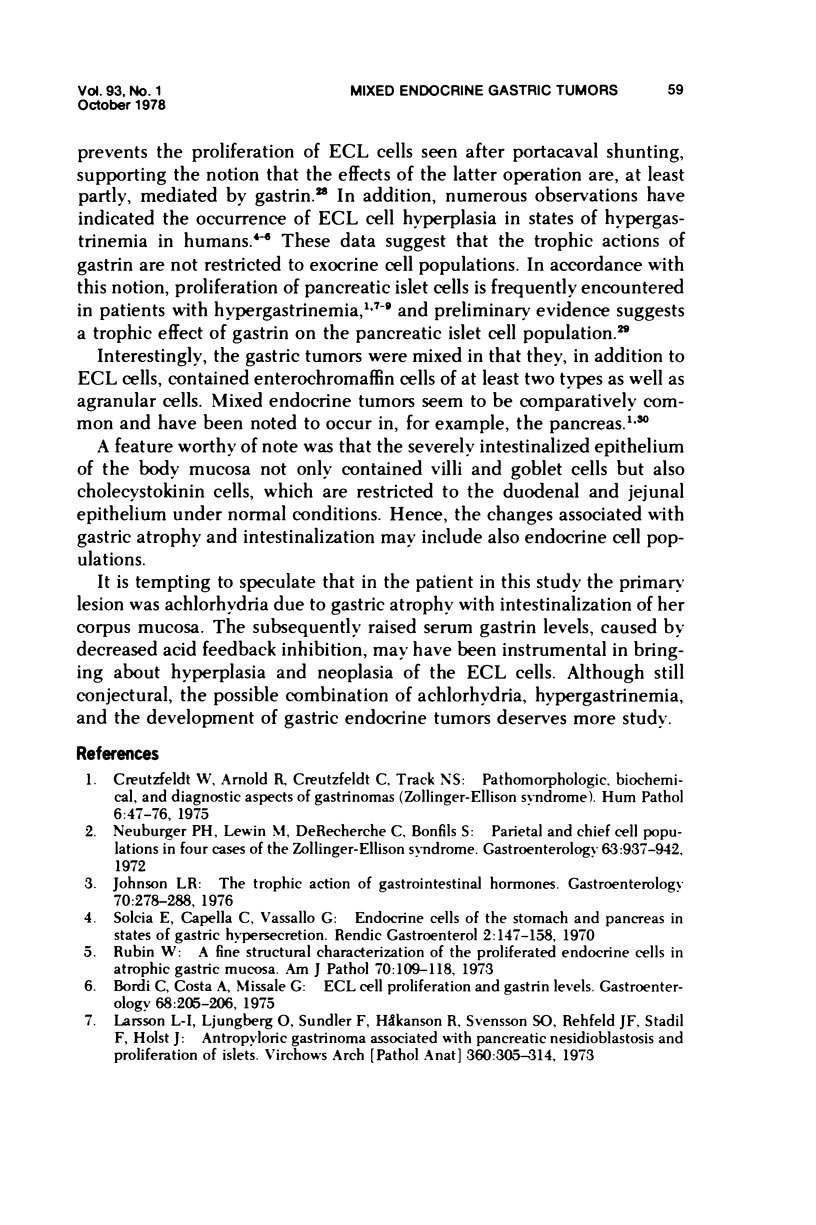
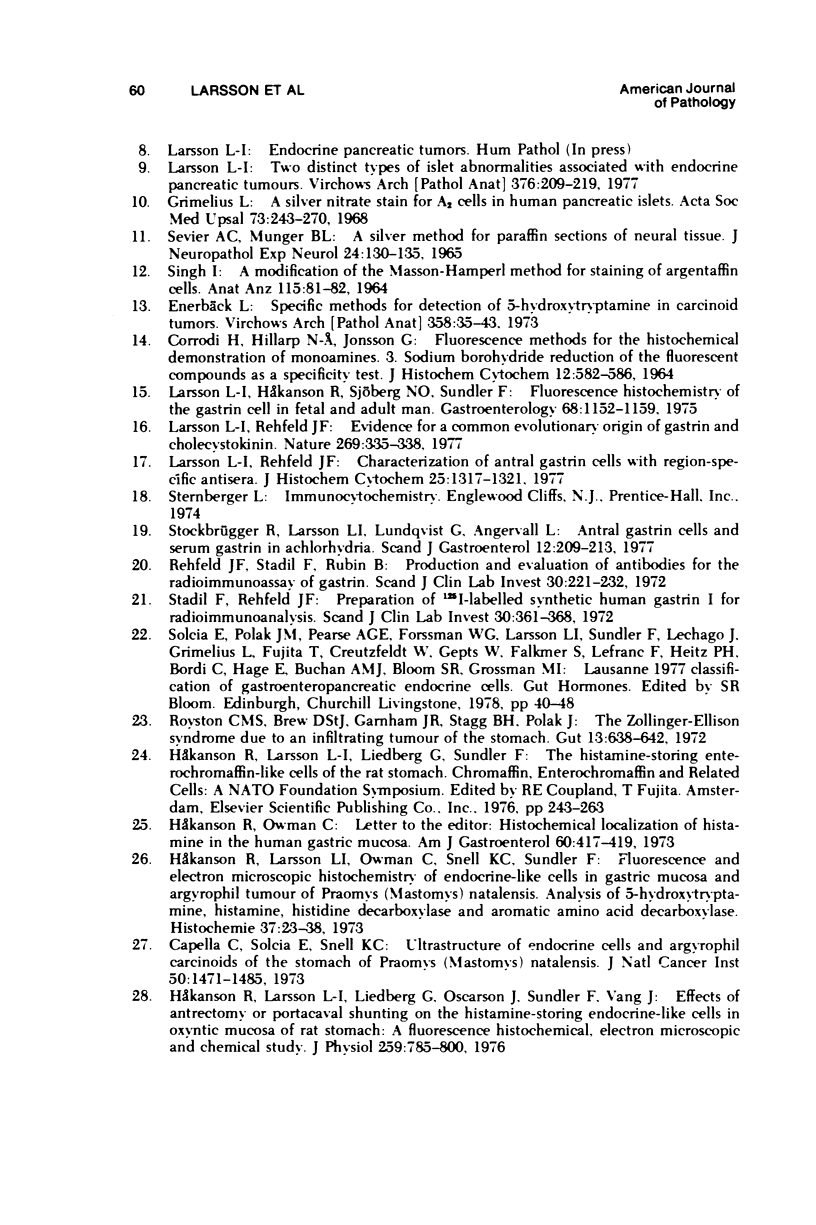
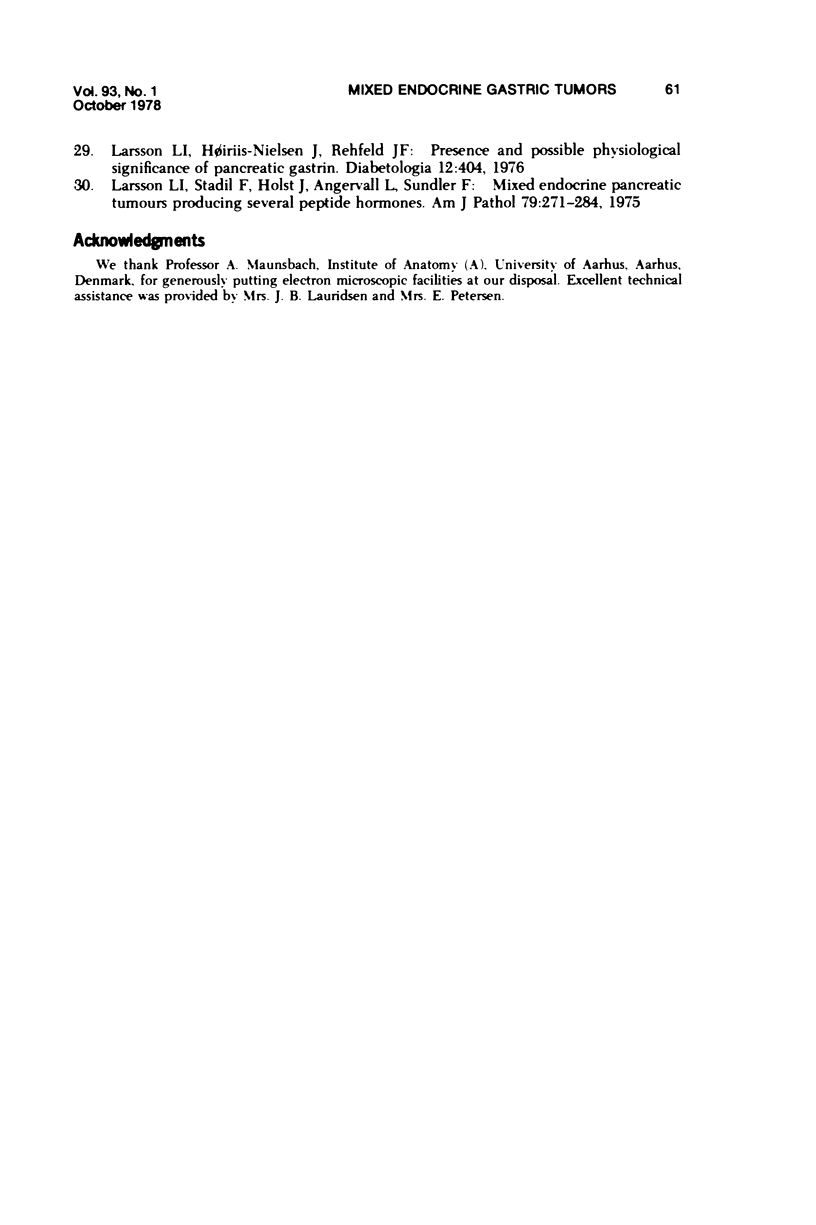
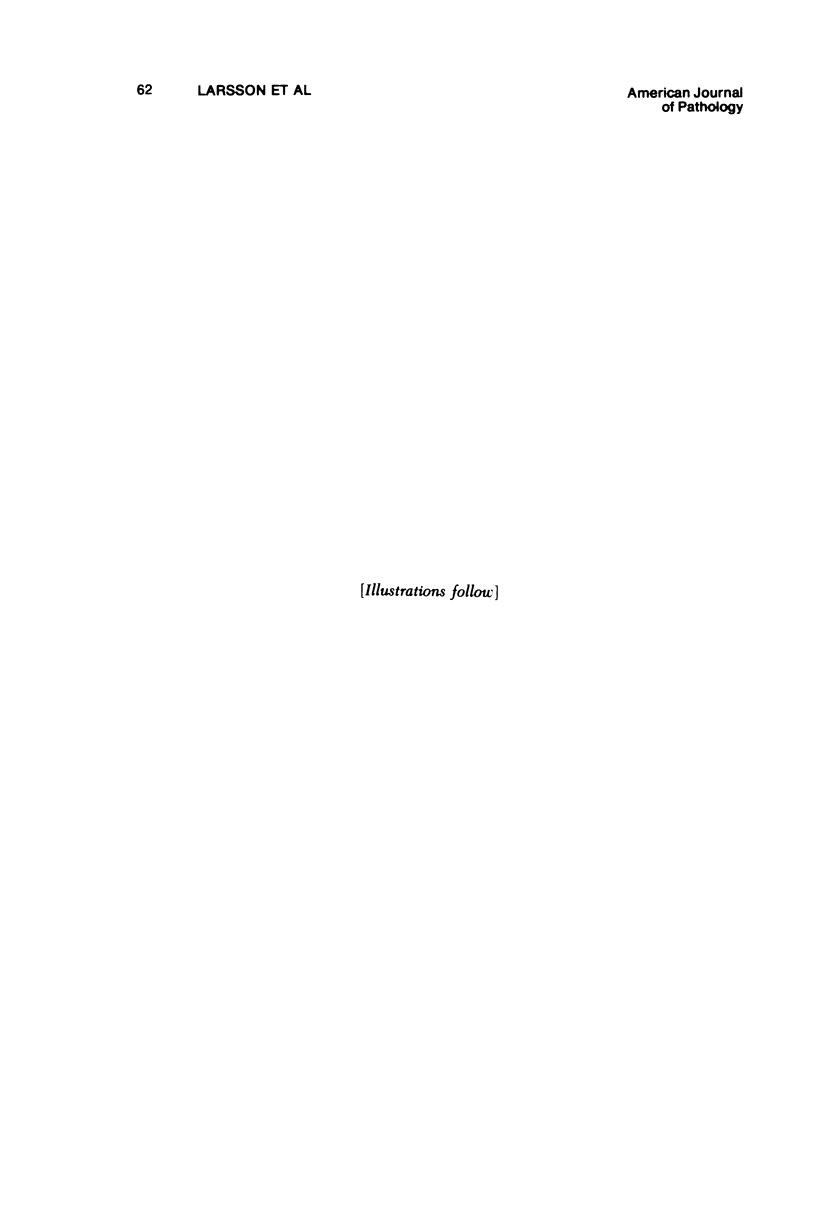
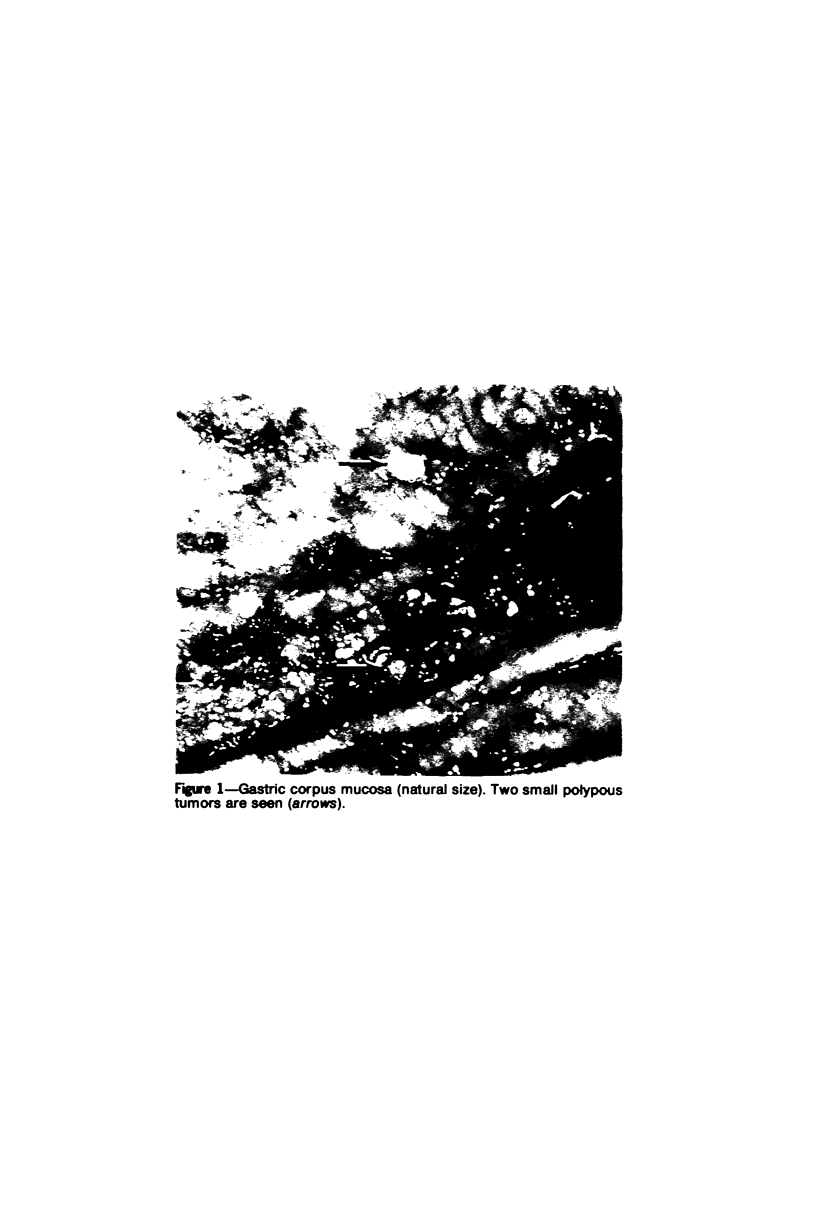
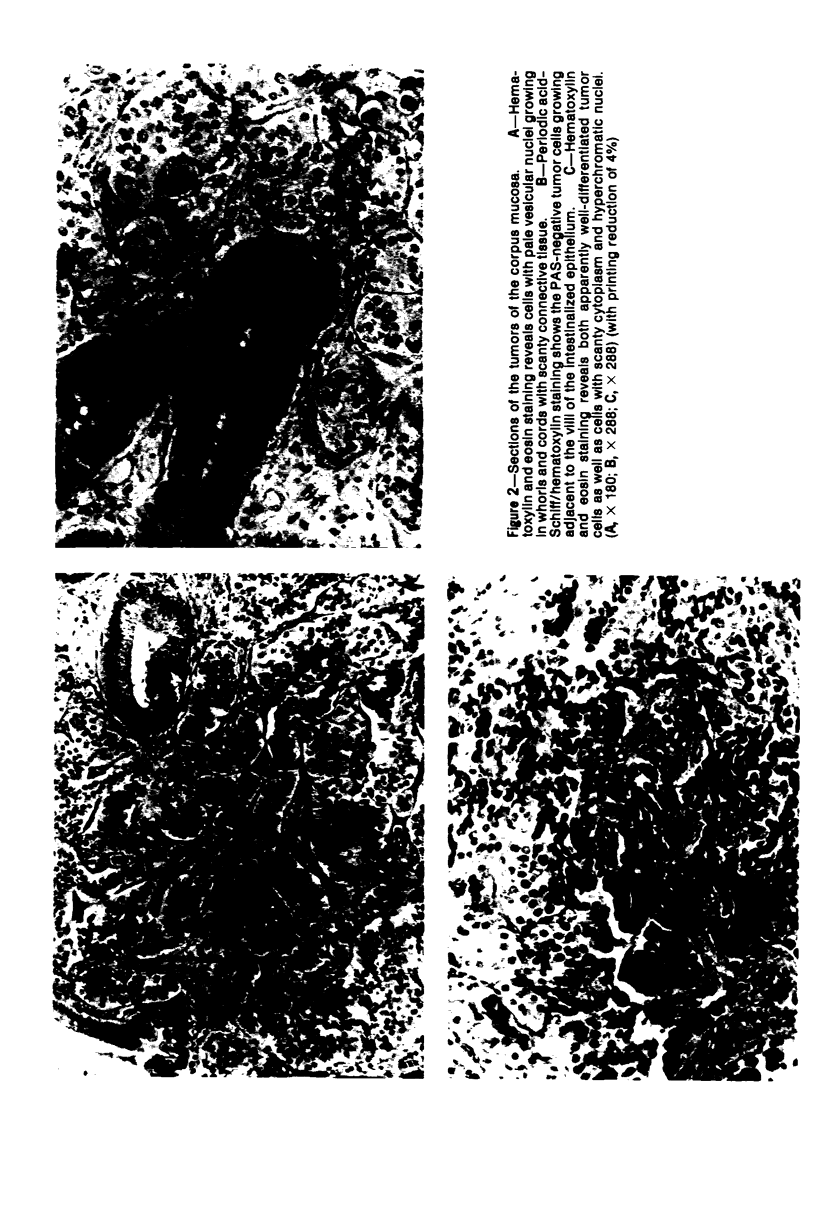

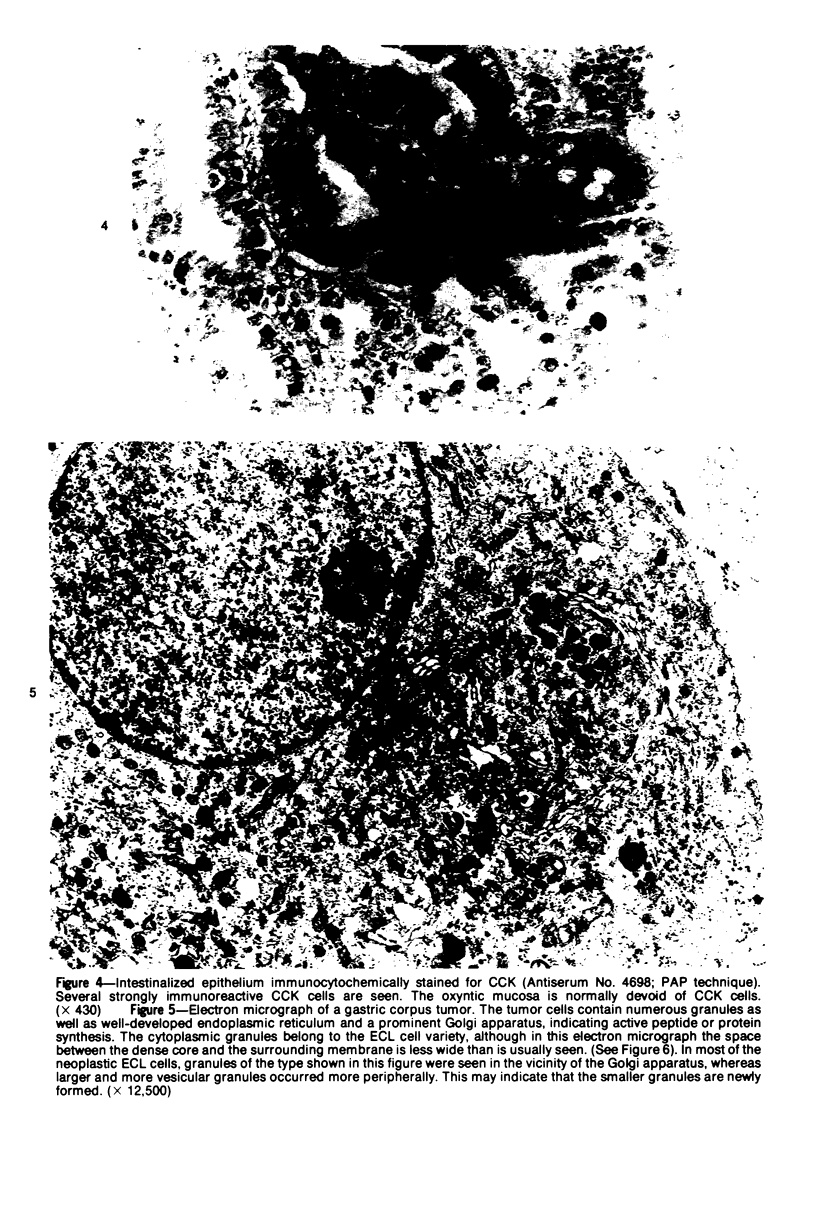

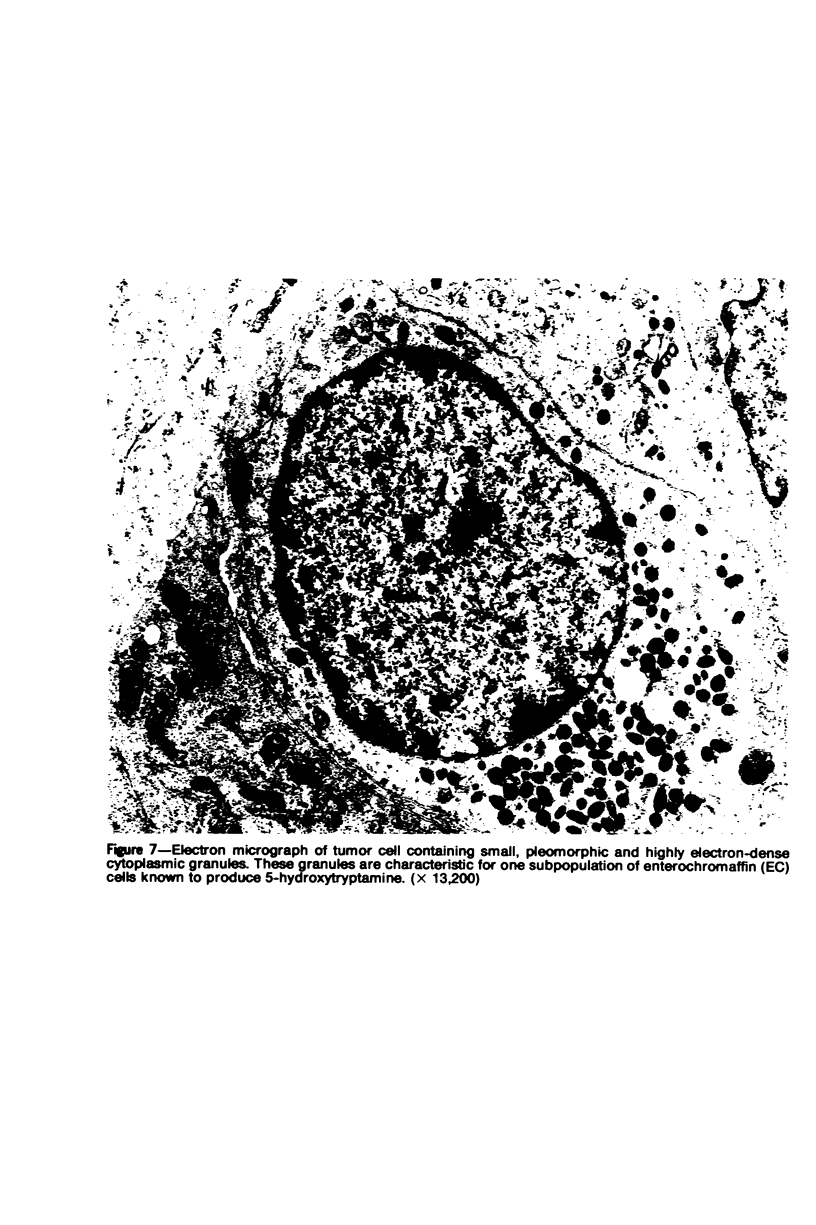
Images in this article
Selected References
These references are in PubMed. This may not be the complete list of references from this article.
- Bordi C., Costa A., Missale G. Letter: ECL cell proliferation and gastrin levels. Gastroenterology. 1975 Jan;68(1):205–206. [PubMed] [Google Scholar]
- CORRODI H., HILLARP N. A., JONSSON G. FLUORESCENCE METHODS FOR THE HISTOCHEMICAL DEMONSTRATION OF MONOAMINES. 3. SODIUM BOROHYDRIDE REDUCTION OF THE FLUORESCENT COMPOUNDS AS A SPECIFICITY TEST. J Histochem Cytochem. 1964 Aug;12:582–586. doi: 10.1177/12.8.582. [DOI] [PubMed] [Google Scholar]
- Capella C., Solcia E., Snell K. C. Ultrastructure of endocrine cells and argyrophil carcinoids of the stomach of Praomys (Mastomys) natalensis. J Natl Cancer Inst. 1973 Jun;50(6):1471–1485. doi: 10.1093/jnci/50.6.1471. [DOI] [PubMed] [Google Scholar]
- Creutzfeldt W., Arnold R., Creutzfeldt C., Track N. S. Pathomorphologic, biochemical, and diagnostic aspects of gastrinomas (Zollinger-Ellison syndrome). Hum Pathol. 1975 Jan;6(1):47–76. doi: 10.1016/s0046-8177(75)80109-2. [DOI] [PubMed] [Google Scholar]
- Enerbäck L. Specific methods for detection of 5-hydroxytryptamine in carcinoid tumors. Virchows Arch A Pathol Pathol Anat. 1973;358(1):35–43. doi: 10.1007/BF00555552. [DOI] [PubMed] [Google Scholar]
- Grimelius L. A silver nitrate stain for alpha-2 cells in human pancreatic islets. Acta Soc Med Ups. 1968;73(5-6):243–270. [PubMed] [Google Scholar]
- Hakanson R., Owman C. Correspondence: Histochemical localization of histamine in the human gastric mucosa. Am J Gastroenterol. 1973 Oct;60(4):417–419. [PubMed] [Google Scholar]
- Häkanson R., Larsson L. I., Liedberg G., Oscarson J., Sundler F., Vang J. Effects of antrectomy or porta-caval shunting on the histamine-storing endocrine-like cells in oxyntic mucosa of rat stomach. A fluorescence histochemical, electron microscopic and chemical study. J Physiol. 1976 Aug;259(3):785–800. doi: 10.1113/jphysiol.1976.sp011495. [DOI] [PMC free article] [PubMed] [Google Scholar]
- Håkanson R., Larsson L. I., Owman C., Snell K. C., Sundler F. Fluorescence and electron microscopic histochemistry of endocrine-like cells in gastric mucosa and argyrophil tumor of Praomys (Mastomys) natalensis. Analysis of 5-hydroxytryptamine, histamine, Histidine decarboxylase, and aromatic amino acid decarboxylase. Histochemie. 1973 Oct 3;37(1):23–38. doi: 10.1007/BF00306857. [DOI] [PubMed] [Google Scholar]
- Johnson L. R. The trophic action of gastrointestinal hormones. Gastroenterology. 1976 Feb;70(2):278–288. [PubMed] [Google Scholar]
- Larsson L. I., Grimelius L., Håkanson R., Rehfeld J. F., Stadil F., Holst J., Angervall L., Sundler F. Mixed endocrine pancreatic tumors producing several peptide hormones. Am J Pathol. 1975 May;79(2):271–284. [PMC free article] [PubMed] [Google Scholar]
- Larsson L. I., Ljungberg O., Sundler F., Håkanson R., Svensson S. O., Rehfeld J., Stadil R., Holst J. Antor-pyloric gastrinoma associated with pancreatic nesidioblastosis and proliferation of islets. Virchows Arch A Pathol Pathol Anat. 1973;360(4):305–314. doi: 10.1007/BF00548351. [DOI] [PubMed] [Google Scholar]
- Larsson L. I., Rehfeld J. F. Characterization of antral gastrin cells with region-specific antisera. J Histochem Cytochem. 1977 Dec;25(12):1317–1321. doi: 10.1177/25.12.925341. [DOI] [PubMed] [Google Scholar]
- Larsson L. I., Rehfeld J. F. Evidence for a common evolutionary origin of gastrin and cholecystokinin. Nature. 1977 Sep 22;269(5626):335–338. doi: 10.1038/269335a0. [DOI] [PubMed] [Google Scholar]
- Larsson L. I., Sjöberg N. O., Sundler F. Fluorescence histochemistry of the gastrin cell infetal and adult man. Gastroenterology. 1975 May;68(5 Pt 1):1152–1159. [PubMed] [Google Scholar]
- Larsson L. I. Two distinct types of islet abnormalities associated with endocrine pancreatic tumours. Virchows Arch A Pathol Anat Histol. 1977 Nov 25;376(3):209–219. doi: 10.1007/BF00432397. [DOI] [PubMed] [Google Scholar]
- Neuburger P., Lewin M., de Recherche C., Bonfils S. Parietal and chief cell populations in four cases of the Zollinger-Ellison syndrome. Gastroenterology. 1972 Dec;63(6):937–942. [PubMed] [Google Scholar]
- Rehfeld J. F., Stadil F., Rubin B. Production and evaluation of antibodies for the radioimmunoassay of gastrin. Scand J Clin Lab Invest. 1972 Oct;30(2):221–232. doi: 10.3109/00365517209081114. [DOI] [PubMed] [Google Scholar]
- Royston C. M., Brew D. S., Garnham J. R., Stagg B. H., Polak J. The Zollinger-Ellison syndrome due to an infiltrating tumour of the stomach. Gut. 1972 Aug;13(8):638–642. doi: 10.1136/gut.13.8.638. [DOI] [PMC free article] [PubMed] [Google Scholar]
- Rubin W. A fine structural characterization of the proliferated endocrine cells in atrophic gastric mucosa. Am J Pathol. 1973 Jan;70(1):109–118. [PMC free article] [PubMed] [Google Scholar]
- SEVIER A. C., MUNGER B. L. TECHNICAL NOTE: A SILVER METHOD FOR PARAFFIN SECTIONS OF NEURAL TISSUE. J Neuropathol Exp Neurol. 1965 Jan;24:130–135. doi: 10.1097/00005072-196501000-00012. [DOI] [PubMed] [Google Scholar]
- SINGH I. A MODIFICATION OF THE MASSON-HAMPERL METHOD FOR STAINING OF ARGENTAFFIN CELLS. Anat Anz. 1964 Jul 31;115:81–82. [PubMed] [Google Scholar]
- Stadil F., Rehfeld J. F. Preparation of 125 I-labelled synthetic human gastrin I for radioimmunoanalysis. Scand J Clin Lab Invest. 1972 Dec;30(4):361–368. doi: 10.3109/00365517209080271. [DOI] [PubMed] [Google Scholar]
- Stockbrügger R., Larsson L. I., Lundqvist G., Angervall L. Antral gastrin cells and serum gastrin in achlorhydria. Scand J Gastroenterol. 1977;12(2):209–213. [PubMed] [Google Scholar]








